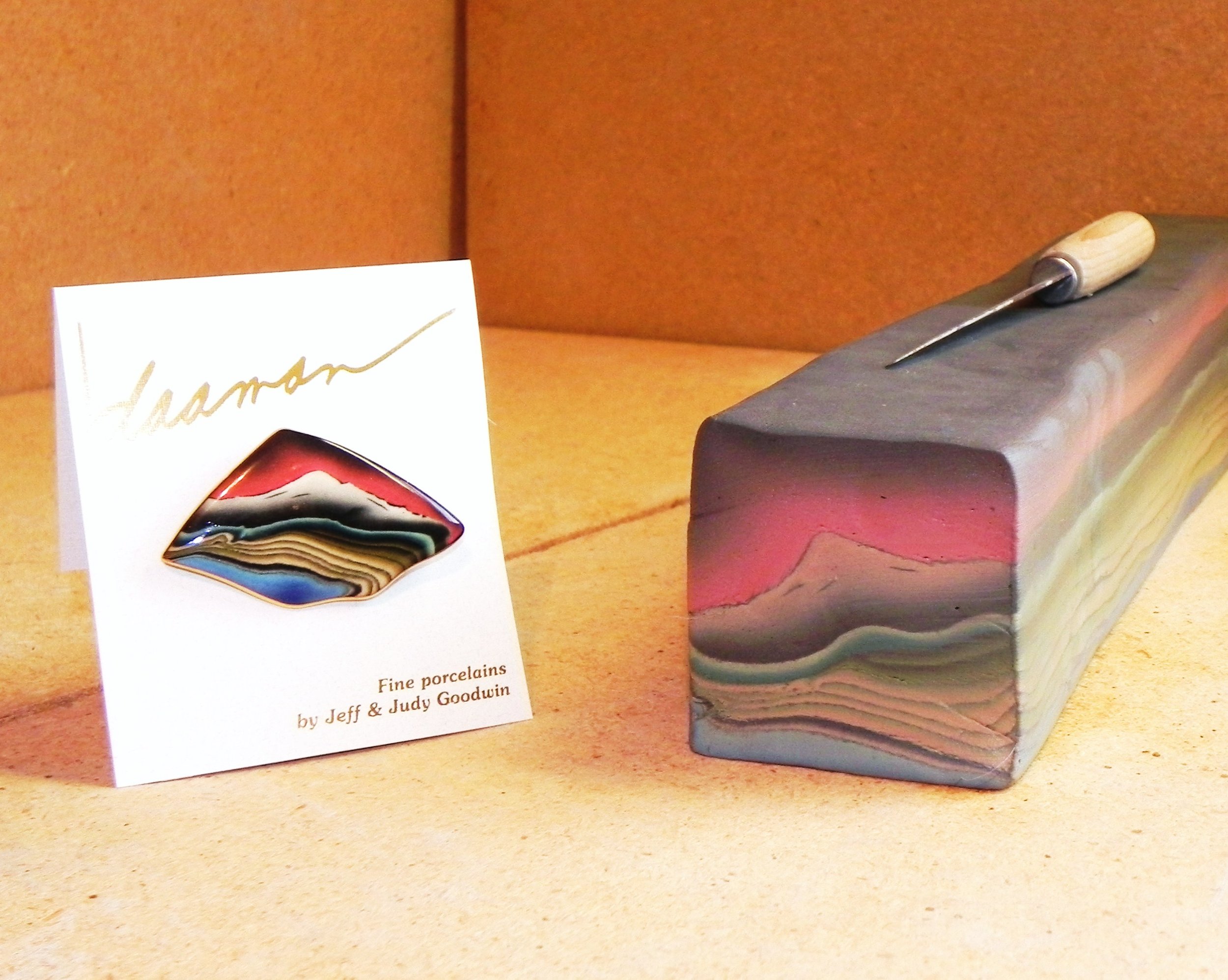Inside the Studio: An Exclusive Interview with Judy Goodwin of Daaman Jewelry
What challenges did you face when starting your handmade business?
Jeff and I (Judy) set up self-employment at a late age. We met in college, and both graduated with degrees not associated with being an artist. Jeff has a geology degree, and I have a French and psychology degree. We both worked for larger companies before deciding to start a business. Jeff was a geologist, and we lived in Wyoming and Utah following his career path. I was able to pick up jobs as a youth and family counselor, a veterinarian technician, and a National Park Ranger. We decided to start our own business to be able to have more control over our daily lives. We had 2 small children and wanted to be able to spend time with them.
Being self-employed was one of the most difficult tasks we’ve ever done in our lives. Learning to advertise, communicate with buyers, and managing our time between home and business was a tremendous challenge. The learning curve was a struggle but very enlightening. We didn’t have the internet in those days, so a lot of our experience was hands on. We had friends who were artists and that helped, but a lot of our self-employment education was experience. Having a mentor would have been a big advantage.
Probably the biggest challenge we’ve always dealt with was getting our product line out to the consumer. When we were traveling to art shows, this was easy. In 2021 we retired from attending art shows and that’s when we joined IndieMe. Of course, when we started the business, we didn’t have that option, we didn’t even own a computer. IndieMe has transformed our business life by getting our art out to buyers without us leaving home.
Tips for time management and organization
Setting a schedule was of the utmost importance. As soon as the kids left for school in the morning we got to work. This helped while the kids were young but as they aged, it became more of a challenge. Both our kids were active in sports, and we found ourselves attending more school events than we had ever imagined. We would work late at night and on the weekends. No time was off limits. Now that we’ve been working for over 25 years, we’ve become comfortable with setting a schedule. It isn’t difficult to walk to the shop for work. We schedule our shows, deliveries, and orders and create our artwork around them. It is much easier than when we were raising young children and maneuvering around their schedule.
Can you share a memorable customer interaction or story?
Since retiring from attending art shows we miss our interaction with our customers. Our customers fueled our creativity, encouraged our ideas, and gave us the kudos that we savored as we created our jewelry. We had customers ask to come to our shop to see our process, introduce our jewelry to friends, call or write to us with stories about how our work enthused them, and even gave us suggestions as to what to create next! It’s nice now to get feedback from our wholesale customers when they share their customers’ comments.
Who or what inspires your designs and creations?
We love our craft. The joy that it gives us to create now colors and jewelry styles gives us the drive to continue using our imagination. Looking around at everything from nature to other people’s artwork inspires us to design something different. Picking up style magazines, watching TV or movies or walking down the street introduces us to current trends. Many times, it’s not even a conscientious decision to design something new. It just happens.
What advice would you give to someone looking to break into the wholesale market for the first time?
If I were to choose to be self-employed today, I would first take multiple business classes. I’m amazed at what needs to be learned regarding money management, taxes, budgeting, advertising, and retirement. We are artists first, which uses a totally different part of the brain than business knowledge. But to be successful with our artwork, it’s essential to know how to run a business. I have seen too many older artists in very uncomfortable situations because they have not prepared themselves financially for retirement. I have also known many artists who have not prepared for economic downturns. When COVID hit, I remember chatting with a young man who had recently opened his dream gallery so he could be surrounded by lovely artwork that he could share with his customers. He was in tears as he told me to cancel his jewelry order because he was closing his gallery and looking for a 9 to 5 job to pay his bills. I experienced this scenario more times than I wanted with artists and store owners during the pandemic. Unfortunately, this was a repeat of what many artists and store owners experienced during the 2008 recession. If you continued to stay in business after 2008, you were not out of the woods.
Can you share any successful strategies for maintaining relationships with buyers?
Keeping good communication between the artist and buyers is extremely important. When setting up accounts we use terminology that introduces us as casually as possible that leaves the door open for discourse. In over 25 years of business, we have only had a handful of situations that ended in unsatisfactory results. And each one still haunts us to some extent. I hate to use the adage that “the customer is always right” but sometimes keeping quiet and letting go is the best way to handle an awkward situation.
Tell us about yourself!
We are enjoying our semi-retirement. We live on 47 undeveloped acres of land with a small lake and orchard. Jeff plays his guitar daily, we have a small flower garden, and both of us have picked up hobbies that have helped keep us engaged.









